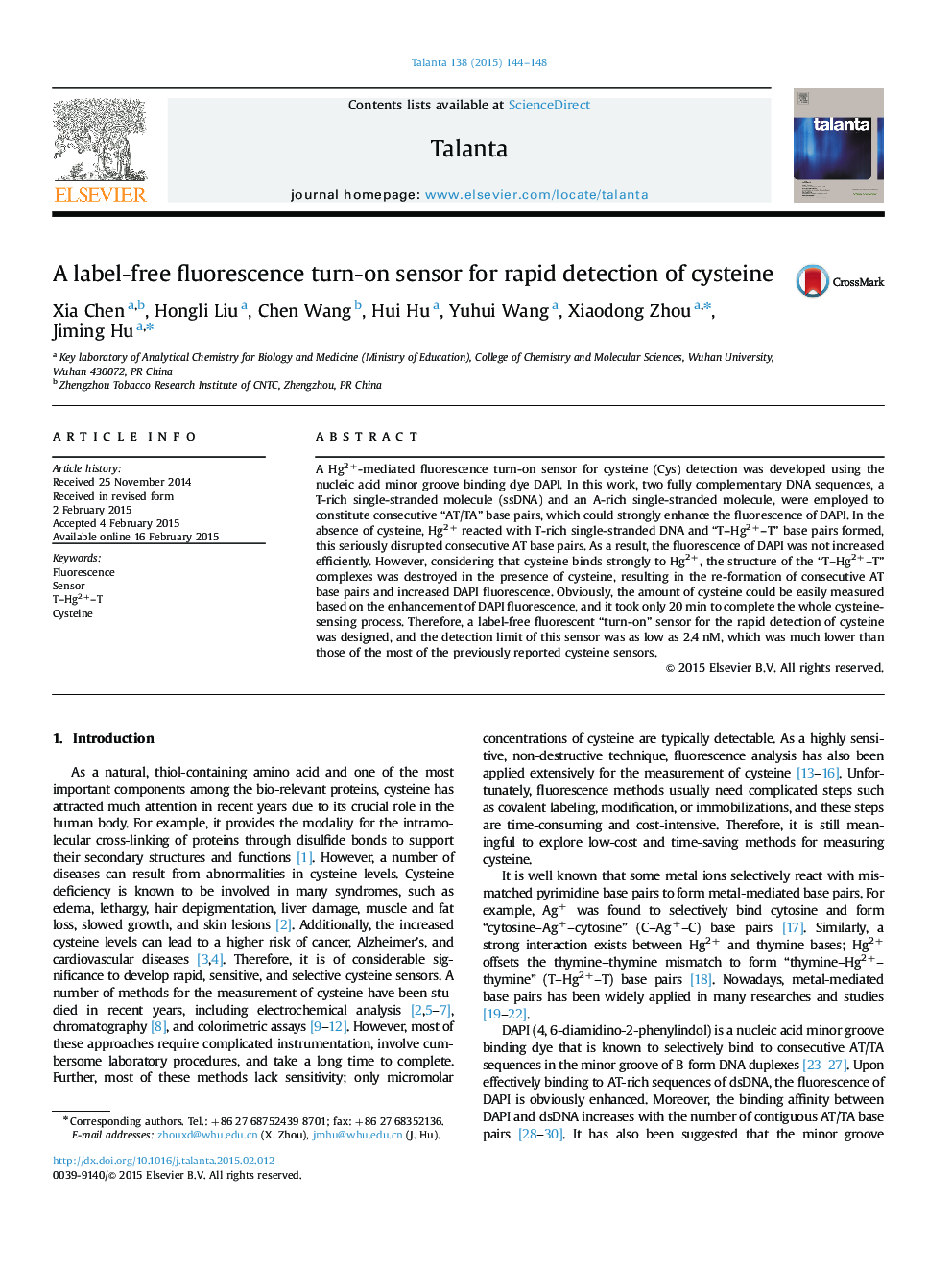| کد مقاله | کد نشریه | سال انتشار | مقاله انگلیسی | نسخه تمام متن |
|---|---|---|---|---|
| 1243342 | 1495797 | 2015 | 5 صفحه PDF | دانلود رایگان |
• This label-free assay avoids modification, offers cost efficiency.
• No separation procedure is needed for the sensing.
• The sensor responses rapidly, and takes 20 min to complete the Cys-sensing.
• This “turn-on” sensor shows high sensitivity and selectivity.
A Hg2+-mediated fluorescence turn-on sensor for cysteine (Cys) detection was developed using the nucleic acid minor groove binding dye DAPI. In this work, two fully complementary DNA sequences, a T-rich single-stranded molecule (ssDNA) and an A-rich single-stranded molecule, were employed to constitute consecutive “AT/TA” base pairs, which could strongly enhance the fluorescence of DAPI. In the absence of cysteine, Hg2+ reacted with T-rich single-stranded DNA and “T–Hg2+–T” base pairs formed, this seriously disrupted consecutive AT base pairs. As a result, the fluorescence of DAPI was not increased efficiently. However, considering that cysteine binds strongly to Hg2+, the structure of the “T–Hg2+–T” complexes was destroyed in the presence of cysteine, resulting in the re-formation of consecutive AT base pairs and increased DAPI fluorescence. Obviously, the amount of cysteine could be easily measured based on the enhancement of DAPI fluorescence, and it took only 20 min to complete the whole cysteine-sensing process. Therefore, a label-free fluorescent “turn-on” sensor for the rapid detection of cysteine was designed, and the detection limit of this sensor was as low as 2.4 nM, which was much lower than those of the most of the previously reported cysteine sensors.
In the absence of Cys, Hg2+ bound to thymine and formed “T–Hg2+–T”, so that AT base pairs between S1 and S2 were seriously disrupted and the fluorescence of DAPI was effectively suppressed. However, the presence of Cys completely changed the situation: Cys removed Hg2+ far away from the structure of “T–Hg2+–T” with its active sulfhydryl group, then AT base pairs appeared and the fluorescence of DAPI was successfully enhanced. Therefore, the amount of Cys could be easily measured according to the fluorescence enhancement of DAPI.Figure optionsDownload as PowerPoint slide
Journal: Talanta - Volume 138, 1 June 2015, Pages 144–148
